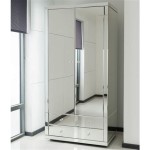How to Mirror Macbook to TV Without Apple TV
Mirroring a Macbook screen to a television offers a larger viewing experience for presentations, entertainment, or simply expanding the workspace. While Apple TV provides a seamless solution within the Apple ecosystem, several alternative methods exist for mirroring without requiring this specific hardware. These methods utilize existing technologies and readily available adapters to achieve screen mirroring functionality.
1. Using Chromecast
Chromecast, a device by Google, is a compact and affordable streaming device that plugs into a TV's HDMI port. While primarily designed for streaming online content, Chromecast also allows screen mirroring from a Macbook. This functionality relies on the Chrome browser and the "Cast" feature. Users simply need to open the Chrome browser on their Macbook, click the three-dot menu in the top right corner, select "Cast," and choose the Chromecast device connected to the TV. The entire desktop or a specific Chrome tab can be mirrored.
Factors to Consider: Ensure both the Macbook and Chromecast are connected to the same Wi-Fi network. Network congestion can impact mirroring performance, potentially causing lag or reduced image quality. Chromecast supports various media formats and offers a user-friendly setup process.
2. Utilizing HDMI Cable with Adapters
A direct wired connection using an HDMI cable provides a reliable and stable mirroring solution. Macbooks often require an adapter to connect to an HDMI cable as they feature different port configurations like USB-C or Thunderbolt. Users need to identify the correct adapter for their specific Macbook model. Once connected, the TV should automatically detect the Macbook as an input source and display the mirrored screen. In some instances, configuring the display settings on the Macbook might be necessary.
Factors to Consider: This method guarantees high image quality and minimal latency, making it suitable for activities requiring precise visuals, such as gaming or video editing. The cost of the adapter should be factored in, and cable length can limit the distance between the Macbook and the television.
3. Leveraging Miracast Adapters
Miracast is a wireless display standard that allows screen mirroring between devices. Miracast adapters plug into the HDMI port of the TV and create a wireless connection with the Macbook. While newer Macbooks don't natively support Miracast, third-party software can enable this functionality. Users need to install compatible software on their Macbook and configure the connection with the Miracast adapter.
Factors to Consider: Miracast compatibility varies depending on the Macbook model and operating system version. Performance relies on wireless network strength, and some adapters may have limitations regarding resolution or frame rate. Researching compatible adapters and software is essential for successful implementation.
4. Employing AirPlay 2 Compatible Smart TVs
Some Smart TVs come equipped with built-in AirPlay 2 support. AirPlay 2 is Apple's proprietary wireless streaming protocol. If a Smart TV supports AirPlay 2, mirroring a Macbook screen is straightforward. Users simply need to ensure both the Macbook and TV are connected to the same Wi-Fi network. The AirPlay icon appears in the menu bar of the Macbook, allowing users to select the compatible TV and initiate screen mirroring. This integrated approach eliminates the need for additional hardware or software.
Factors to Consider: Verify that the Smart TV specifically supports AirPlay 2. AirPlay 2 relies on network stability, and performance can be affected by network congestion. This method offers a convenient solution within environments already utilizing compatible Smart TVs.
5. Using DLNA Apps and Software
DLNA (Digital Living Network Alliance) allows media sharing between devices on a home network. While not strictly screen mirroring, DLNA apps and software can stream specific media content from a Macbook to a DLNA-compatible Smart TV. Users need to install DLNA server software on their Macbook and a compatible client app on the TV or use a Smart TV with built-in DLNA support. This method allows for sharing videos, photos, and music.
Factors to Consider: DLNA focuses on media streaming rather than full screen mirroring. File format compatibility can be a limitation. Network bandwidth influences streaming quality, and initial setup may involve configuring the DLNA server and client applications.
6. Exploring Third-Party Screen Mirroring Software
Numerous third-party applications specialize in screen mirroring functionality for various operating systems. Some of these applications support mirroring to different receiver devices, including Smart TVs and streaming devices. Users need to research and select software compatible with their Macbook and chosen mirroring method. These applications often require installation on both the Macbook and the receiving device, or utilize a common web browser interface.
Factors to Consider: Software features, compatibility, and cost vary significantly. Trial versions can be useful for testing functionality before committing to a purchase. Understanding the specific requirements and limitations of chosen software is essential for a successful mirroring experience.
7. Connecting Through a Windows PC as a Bridge
If a Windows PC is already connected to the TV, it can act as a bridge for mirroring the Macbook screen. This method requires screen mirroring software installed on both the Macbook and the Windows PC. The Macbook's screen can then be mirrored to the Windows PC, which in turn, is already connected to the TV, effectively mirroring the Macbook screen to the TV. This indirect approach provides a workaround when direct connections are unavailable or impractical.
Factors to Consider: This setup relies on the stability and performance of both the Macbook and the Windows PC. Network connection and software compatibility on both machines influence mirroring quality and latency. It adds complexity compared to direct connection methods but offers flexibility in certain scenarios.

How To Airplay Mirror Mac Samsung Smart Tv Without Apple Redmond Pie

5 Solutions To Airplay Mirroring Without Apple Tv 2024 Dr Fone

How To Mirror Your Mac Samsung Tv Wirelessly Without Apple

Mirror Mac To Tv Without Apple Save Money Get Free App

How To Connect Macbook Screen Tv Or Monitor Wirelessly Free No Wifi Apple 2024

Connect Hisense Tv To Apple Mac Wireless Screen Mirror App
How To Connect Your Mac Computer A Projector

Screen Mirror Mac Or Macbook To Tv Airbeamtv

How To Mirror Iphone Tv Without Apple

How To Connect A Macbook Tv Review Of The Various Solutions








